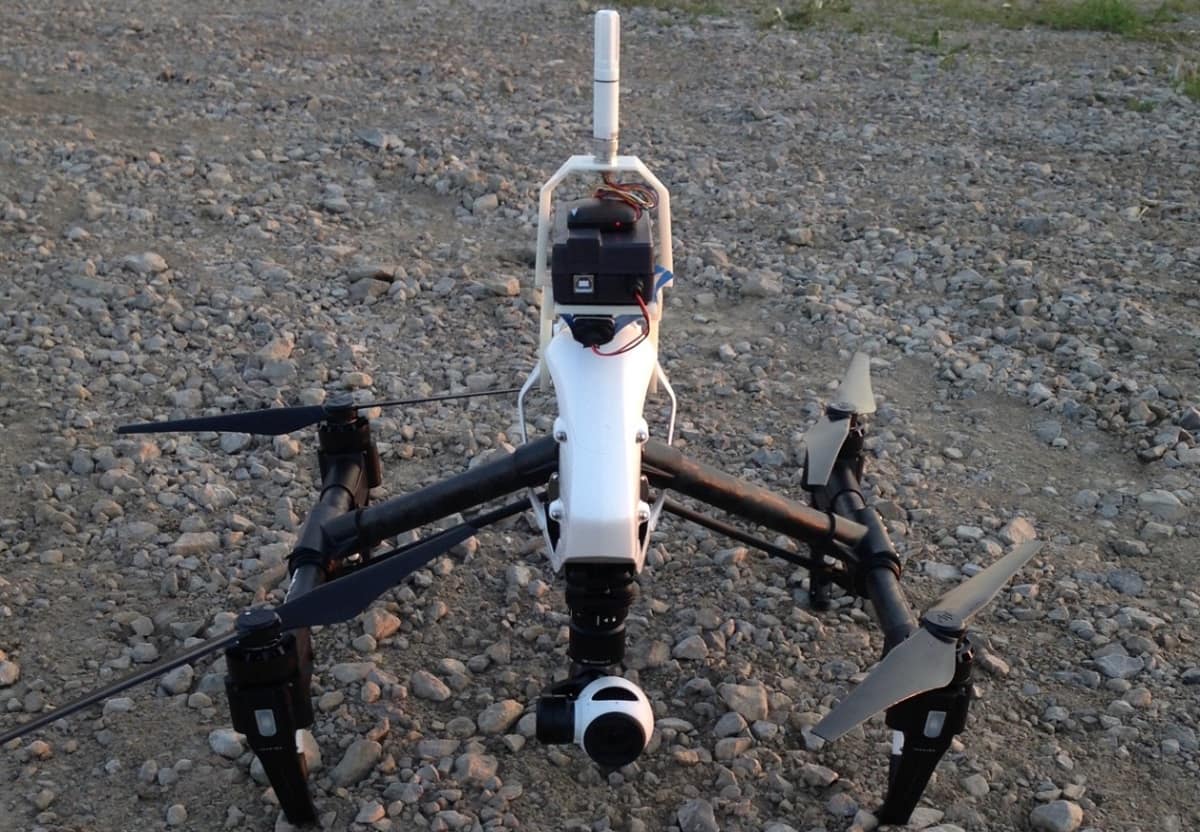Wind Turbines Affect Humidity Over Crop Fields, New UAS Measurements Confirm

Farmers earn extra income by hosting wind turbines on small tracts of land, but the large, spinning blades change meteorological conditions near the ground. Those changes can affect crop yields – for better or for worse. A wind turbine might inhibit crop disease, for example, or it could speed moisture loss during a drought.
To learn more, Kevin A. Adkins, an assistant professor of aeronautical science and director of Embry-Riddle Aeronautical University’s Gaetz Aerospace Institute in St. Lucie County, Fla., flew a small unmanned aerial system (sUAS) into wind-turbine wakes to measure differences in relative humidity levels.
Adkins and his colleague Adrian Sescu of Mississippi State University published their research findings on May 31 in the International Journal of Green Energy.
Closer to the ground – below the hub of a spinning wind turbine – relative humidity seems to decrease by as much as 3 percent downwind of a single turbine, whereas humidity increases above the hub, Adkins and Sescu concluded. This impact is magnified within a broader turbine array. “This occurs as drier air is mixed downward and moister air is mixed upward,” they wrote.
The research was conducted on two Midwestern wind farms. An instrument-laden small quadcopter-style UAS was dispatched into two different wind-turbine wakes, where it hovered at key points, collecting data both upstream and downstream of the turbine. The hub of one turbine towered 93 meters (305 feet) above a field of winter wheat, while a second turbine had a hub height of 80 meters (262 feet). Baseline meteorological conditions were assessed.
The quadcopter, equipped with GPS and a suite of instruments for capturing temperature and relative humidity levels, made a series of sweeps through the wind turbines’ wake zone, following a prescribed flight path over a four-day period.
After analyzing their data, Adkins and Sescu proposed that “the descending blades [of the turbines] are delivering drier air downward, while the ascending blades are displacing moister air upward” – away from the surface of crop fields.
Such insights could have significant implications for crops, soil and livestock, Adkins noted.
“For farmers, reduced relative humidity over fields could have an impact on their crop productivity,” he said. “It’s my hope that farmers will take this new information and utilize it, leveraging their specialized knowledge.”
Most prior investigations of wind-turbine impacts on near-surface meteorology have been based on computer modeling, Adkins said. “The implementation of the unmanned aerial system [in this study] provides proof of concept for a platform that can also be used for the measurement of other atmospheric parameters with high spatial resolution,” he and Sescu wrote.
Embry-Riddle’s Gaetz Aerospace Institute, where Adkins works, is a dual-enrollment program that allows students at some 70 participating Florida high schools, spanning 35 counties, to earn college credits by completing up to 10 courses taught by Embry-Riddle professors. Students can select from 18 courses in such areas as aeronautics (pilot training), unmanned aircraft systems, space flight, astronomy, meteorology and engineering, said Colleen Conklin, executive director of the Gaetz Institute at Embry-Riddle.

 Ginger Pinholster
Ginger Pinholster